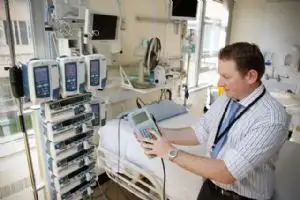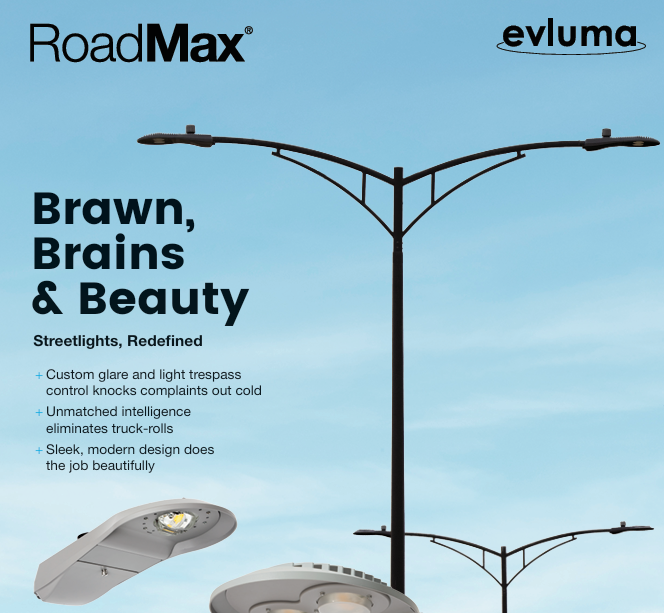Hospital Electrical Safety

NFPA 70e Training
Our customized live online or in‑person group training can be delivered to your staff at your location.

- Live Online
- 6 hours Instructor-led
- Group Training Available
Download Our NFPA 70E Fact Sheet – 2024 Electrical Safety Edition

- Understand how NFPA 70E works with NEC and NFPA 70B standards
- Clarify the shared responsibility between employers and employees
- Learn how NFPA 70E supports OSHA compliance
Hospital electrical safety ensures compliant power systems in patient care areas, covering grounding, bonding, isolation transformers, leakage current limits, GFCIs, arc-flash mitigation, UPS redundancy, and NFPA 99/IEC 60364-7-710 testing to prevent shock, fire, and outages.
What Is Hospital Electrical Safety?
Hospital electrical safety is the framework ensuring safe, reliable power and compliant equipment in clinical areas.
✅ Complies with NFPA 99, IEC 60364-7-710, and IEC 60601 standards
✅ Implements grounding, equipotential bonding, and isolation panels
✅ Includes GFCIs, LIMs, UPS, surge protection, and arc-flash controls
Hospital Electrical Safety
Hospital electrical safety is critical to patient care and staff protection, requiring strict compliance with codes, regular maintenance, and proper training to prevent electrical hazards in medical environments. It is very important in hospitals as patients may be undergoing a diagnostic or treatment procedure where the protective effect of dry skin is reduced. Also patients may be unattended, unconscious or anaesthetised and may not respond normally to an electric current. Further, electrically conductive solutions, such as blood and saline, are often present in patient treatment areas and may drip or spill on electrical equipment. Conducting an Arc Flash Study is essential for hospitals to assess risks, calculate incident energy, and ensure compliance with safety standards. NFPA 70E Arc Flash Training For governance clarity, refer to Electrical Safety Regulation resources that outline how codes and standards apply in clinical environments.
Request a Free Training Quotation
Hospital electrical safety is essential for protecting patients and staff from hazards like electric shock and arc flash blast incidents. Compliance with OSHA electrical standards, including 29 CFR 1910.303 and 29 CFR 1910.304, helps ensure that the electrical system in healthcare facilities operates safely. The Occupational Safety and Health Administration (OSHA) emphasizes the importance of using ground fault circuit interrupters (GFCIs), especially near water sources where wet hands can increase the risk of injury. Proper management of extension cords, routine inspection of medical equipment, and implementation of electrical safety in healthcare protocols are vital for minimizing risks. Maintaining safety in healthcare facilities means following best practices and regulations to prevent incidents and ensure a safe environment. In addition, Electrical Safety in the Workplace guidance can help align hospital policies with OSHA expectations for daily operations.
Sign Up for Electricity Forum’s Arc Flash Newsletter
Stay informed with our FREE Arc Flash Newsletter — get the latest news, breakthrough technologies, and expert insights, delivered straight to your inbox.
A comprehensive plan for electrical safety has been developed for Memorial Hospital. The programme includes selection, inspection, testing, maintenance and calibration of electrical and electronic instruments. In addition, the services of an electrical safety group includes training of personnel as to the general nature of electrical hazards and the safe operation of specific instruments and systems. The whole subject of electrical safety has been a topic of considerable controversy and speculation. Such aspects as the critical current to cause fibrillation, safety devices, techniques and measurement of leakage currents are now being critically evaluated by hospitals, government and national groups and manufacturers. Topics included in this paper are patient protection by use of isolation, insulation and grounding. A survey of present and proposed standards is also discussed. Foundational concepts from General Electrical Safety support these procedures and reinforce a culture of risk awareness across departments.
The biggest problem encountered by hospitals is the leakage of current from devices (usually in an operating theatre setting), or devices that have power levels exceeding normal levels.
What can be tricky is determining if the problem is restricted solely to the device, or if it is from the power system to which it is connected. In operating rooms that use isolated power systems, there can be a situation where the power system has a high leakage current but is connected to a low-leakage device (revealing an acceptable reading). The same can be true for the opposite low-leakage power systems connected to high-leakage devices. Defining the Arc Flash Boundary helps hospital staff identify safe working distances and determine the necessary personal protective equipment. Lessons from Industrial Electrical Safety are valuable for hospital central utility plants and labs where higher fault energy may be present.
It is necessary for hospitals to test devices on conventional grounded power systems to reveal worst-case performance. Testing a device on an isolated power system only shows a blend of performances of the device and power system. Enhancing Basic Electrical Safety Awareness among hospital personnel can reduce the risk of electrical shocks and ensure a safer environment for patients and staff.
There are legal requirements for proper testing, especially when dealing with patient care. The National Fire Protection Association’s (NFPA) standard for health care facilities (NFPA 99-1993) demands that a leakage current test for devices related to patient care be done on a properly grounded alternating current power system. The OSHA Standard 1910 Subpart S-Electrical-General states the proper work practices and grounding requirements to ensure proper electrical safety. Understanding OSHA 1910.147 is crucial for hospital maintenance teams to implement effective lockout/tagout procedures and protect workers from unexpected energization.
In Canada, medical facilities are required to follow the hospital electrical and fire safety standards. Although cell phones are permitted, the use of personal electrical appliances are generally not allowed in the hospital unless approved by the hospital’s administration in special cases, and meeting the criteria of the Canadian Standards Association. Following the principles of Electrical Safety Work helps technicians document energy-control steps and verify de-energization before service.
Several codes come into play for hospital safety in Canada:
-
National Fire Code
-
National Building Code
-
Canadian Electrical Code
-
Boiler Code
-
Canadian Welding Code
-
Code for Hospital Operating Room Safety
Broad overviews like Electrical Safety provide accessible summaries for leadership and safety committees.
Electricity Today T&D Magazine Subscribe for FREE

- Timely insights from industry experts
- Practical solutions T&D engineers
- Free access to every issue
The National Labour Code
The National Fire Code sets out the requirements for safe maintenance of buildings after their occupation. Drawing heavily on American and, to a lesser extent, on Canadian standards, this code establishes standards for fire prevention, fire fighting and life safety in buildings in use. The National Building Code is essentially a set of minimum regulations for the safety of buildings with reference to public health, fire protection and structural sufficiency. Electricity posed great danger of electrocution when it first came into public use. Over the years a collection of Canadian electrical safety standards has been assembled into what is now known as the Canadian Electrical Code. Learning about the causes and prevention of Arc Flash Death underscores the importance of stringent electrical safety measures in hospital settings During renovations and new builds, insights from Construction Electrical Safety help project teams coordinate temporary power, lockout zones, and contractor controls.








